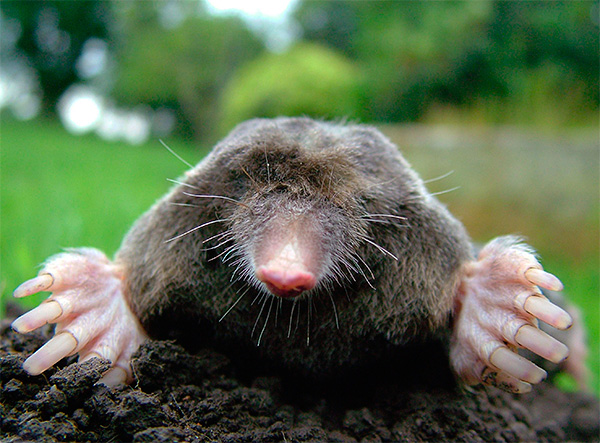
Next you will learn:
- Does the mole have eyes or did they completely disappear in the course of natural evolutionary selection;
- Are moles completely blind or is it a myth;
- Why was evolution so “unkind” to moles, making them practically blind;
- What is the difference between the eyes of different species of moles and whether blindness is normal for animals leading an underground lifestyle ...
It is a common misconception that a mole has no eyes, and therefore this animal is completely blind. It is clear why this opinion has developed and received support among the masses: they say that the animal lives all its life in its dark dungeons, and it seems that it does not need its eyes at all, because they still can not see anything in the pitch darkness of the underground passages.
However, if you suppose you catch a mole in a garden plot and decide to take a closer look if he has eyes, then absurd doubts about their absence will immediately disappear ...
Do moles have eyes and why do people think they aren't
The mole actually has eyes. In an ordinary European species, they are easy to see if you take an animal and push the hair just above the nose, between the nose and the place of the proposed location of the ears (by the way, the mole also does not see them). Here tiny holes are found in the skin among the fur, and already under them are, in fact, the eyes.
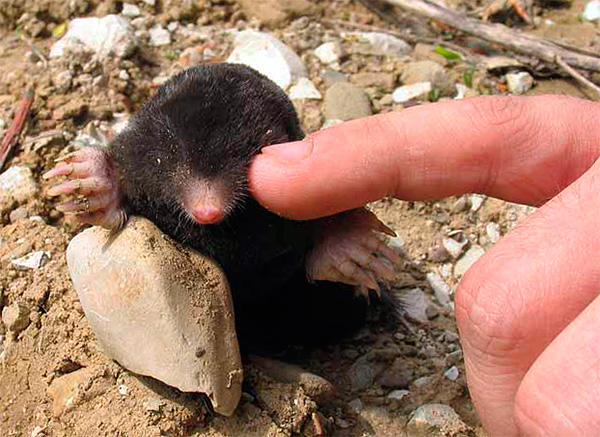
If a live animal is in the hand, then in most cases his eyes will be open and, excuse the pun, they will be visible to the naked eye.
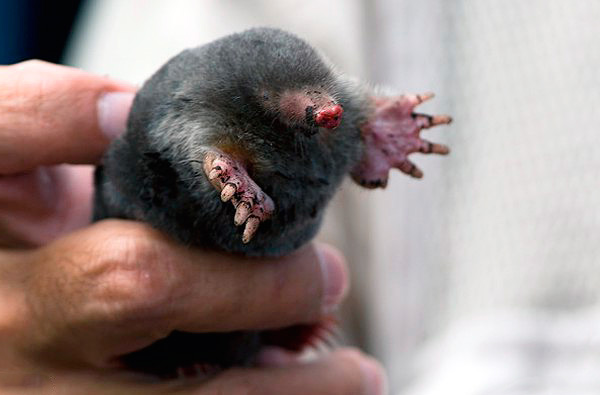
On a note
In some species of moles, as well as in some geographical populations of the European mole, the eyelids grow together, and the eyes are constantly under the skin. But at the same time the eyes themselves exist and do not disappear anywhere.
At the same time, if purposefully tiny eyelids are not found in the animal, it can be difficult to notice them. There is nothing surprising in the fact that many gardeners, having caught an animal on the site, glance at it and do not find their eyes (and also do not find their ears). Usually, a cold corpse is already in the hands of a gardener, and therefore it is quickly concluded that the mole has no eyes at all, and the former pest of beds is thrown onto a compost pile.
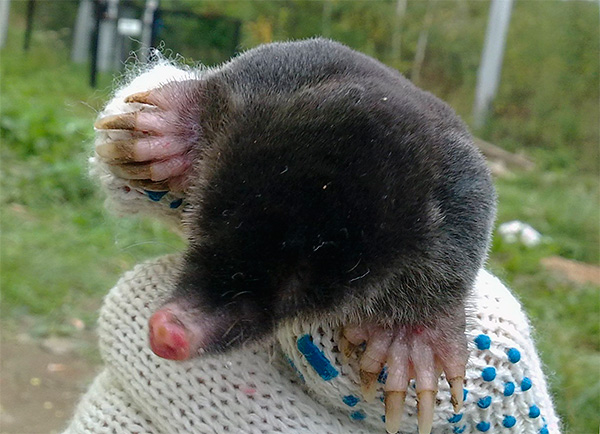
By the way, one must also take into account the fact that the authority of gardeners themselves, who really held in their hands even dead, but real moles, is often higher among ordinary inhabitants than, say, the authority of a cabinet scientist, who is considered a "bookworm." The argument “I caught hundreds of these moles and held them in my hands, but I didn’t see my eyes” sounds more convincing to an average citizen than “science has proved ...”. And therefore, the opinion that moles have no eyes is quite widespread, although with some effectiveness it is eradicated in young shoots even on a school bench.
So, we found that the mole still has eyes. You can even see them in the photo below:
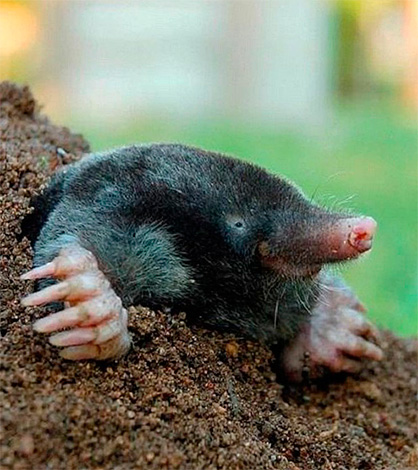
Therefore, talking about the complete disappearance of the eyes of a mole is not correct. At least this is somewhat premature.
A little lower we will talk about the fact that at the moment, apparently, there is an evolutionary disappearance of the eyes of moles. This process is a form of natural selection that provides the greatest adaptability of animals to their living conditions.
But before delving into the jungle of evolution, let's first try to look at the world through the eyes of a mole ...
What do the mole's eyes look like and what are they capable of
The eyes of most species of moles are relatively small in size and are almost completely hidden in the hair. In the European species, they are closed by moving eyelids, and most often are in such a closed state.
The diameter of the eyes of the animal is about 1-2 mm.In general, the structure of the retina is the same as that of most other mammals. There are approximately 2,000 ganglion cells in the eye itself, and the optic nerve has about 3,000 axons.
The photo clearly shows how small the eyes of an ordinary (European) mole are:
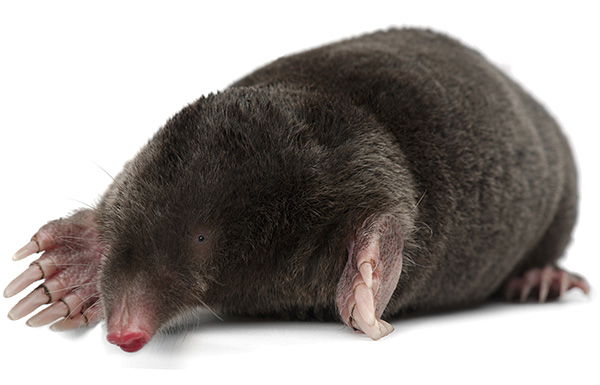
At the same time, moles that are standard for mammals have no rods and cones, and all photoreceptors are almost identical in shape, very small, and completely atrophied around the periphery of the eye. The specificity of vision in an animal is connected with this:
- The mole has daily vision, albeit not as effective as that of man, but sufficient for his own needs;
- An animal can distinguish some contrasting colors;
- The animal does not see the contours of objects, but responds well to a pronounced change in illumination. At least in the conditions of experiments, animals successfully solve the problem of distinguishing light and darkness;
- Moles see moving objects. Some scholars are inclined to the version that it was the discovery with the help of predators' vision that provided the moles with the preservation of even weak, but still the ability to see.
It is interesting that even in moles in which their eyes are hidden under the skin, they also see and provide the animal with the ability to distinguish between light and darkness. Just as we can even see through a dense fabric a source of bright light, so moles even see it through the skin in front of our eyes.
Therefore, by the way, it makes no sense to talk about hypertrophic hyperopia or nearsightedness of moles. With their very mediocre visual abilities, the distance at which they see practically does not play any role (this is the same as calling myopia a person with a blindfold that barely transmits light).
The photo below shows the eastern mole:
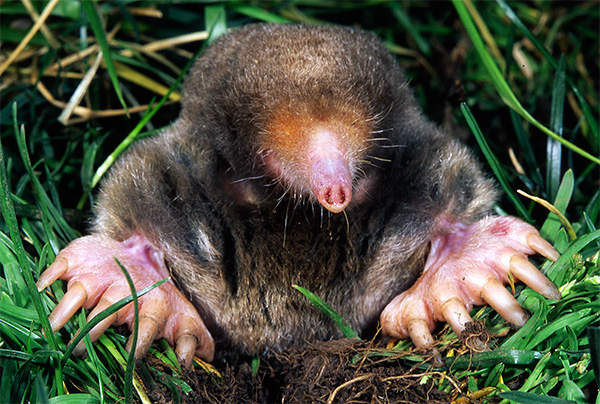
It is interesting
There is also an interesting myth that the mole sees other moles well due to the special structure of its eyes. In reality, using only vision, the mole cannot distinguish its fellow from, for example, a rat (just a neighbor) or an ermine (already a dangerous predator). The identification of the animal both underground and above it occurs in the mole due to the sense of smell.
Moles, like some other insectivorous animals, are known to have a strong musky smell. Although it cannot be compared with the stench from shrews in strength, it is enough for one individual to smell the other at a sufficiently large distance, all the more so, given their well-developed sense of smell.
Why mole eyesight?
So, let's see why the mole needs vision in its dark underground passages.
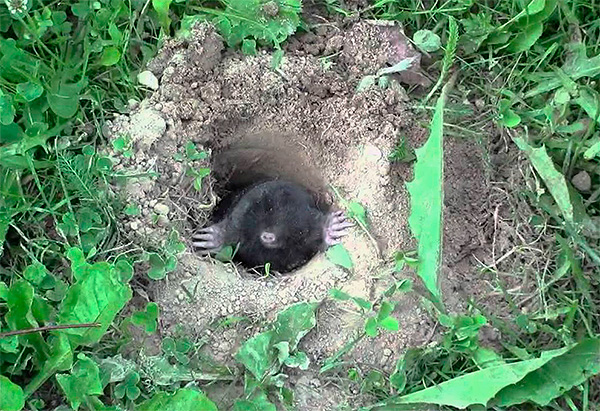
We draw conclusions from the above:
- First of all, the eyes of the mole are needed in order to navigate in space if it is selected on the surface of the earth. Here he can understand that he was not just in some kind of wide tunnel under the ground, but just got out into the sunlight. Even on a moonlit night, an animal can distinguish a dungeon from open space;
- Even the mole’s underdeveloped eyes allow him to notice moving prey - earthworms, insects, small lizards and frogs;
- With the help of the eyes, moles see predators falling into their tunnels. As a rule, if such a predator climbed into the mole’s passage or unearthed it intentionally to capture the animal, the owner of the dungeon is likely to be killed. However, if the danger turned out to be in the tunnel by chance, and the predator does not plan to search and kill the mole, but only wants to get out, then the mole himself has the opportunity to escape from the dangerous section and hide in other moves.
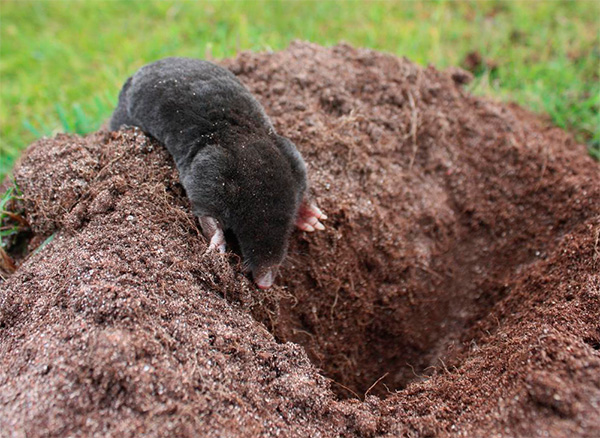
In addition, the eyes help the mole navigate in space when the animal makes moves under the snow in the winter (it is usually quite light here). And also vision helps when crossing small rivers and other water barriers - star-bearing moles, for example, swim well and can even hunt under water.
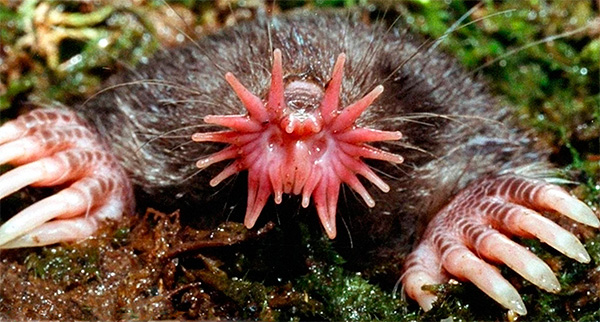
Perhaps, precisely because moles have eyes and help them survive in harsh and merciless natural conditions, they still have not managed to completely disappear. Although, apparently, natural selection goes precisely towards the complete degeneration of the organs of vision in these animals.
Animal eye degeneration as a form of natural selection
From the point of view of evolutionary theory, the gradual simplification of the structure of the eyes of the mole and their loss of many functions is a way of adapting to the lifestyle that this animal leads. Moreover, the regression of the visual system of the animal is associated not only with the lack of need for a clear visual picture, but also in the harmfulness of full eyes under the ground.
For example:
- If the mole had normal large eyes, such as, say, rats or mice, then with constant digging of the underground passages, dust and earth would get into them. This would lead to eye contamination, inflammation, suppuration and death of animals. The smaller the eyes, the more difficult it is to damage them, and when they are constantly closed for centuries, they are reliably protected from external influences;
- Since the sense of smell is much more important for moles, the majority of analyzers in the brain are responsible specifically for processing information from olfactory receptors (in star moles, touch also plays an important role). Involving the vast brain structures in the processing of visual information would not be rational.
The photo below shows the eye of the Iberian mole:
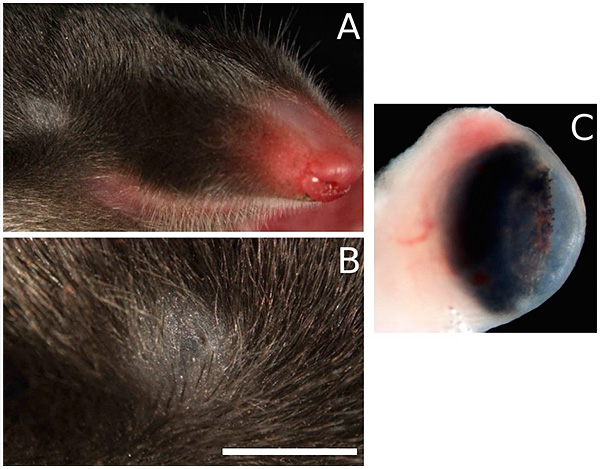
By and large, moles at this stage of their evolution are moving towards the complete disappearance of the eyes. This form of natural selection in accordance with different classifications is:
- Driving - with it, the advantage in survival is in animals that deviate from the norm of development of one or another trait. Normally predominantly open are not very small eyes, but in the case of moles, individuals with constantly shrinking eyes, closing for centuries, often survived. That is, natural selection moves these animals towards complete degeneration of vision.
- Cutting off, as individuals with “normal” eyes were more likely to die due to eye damage.
By the way, it is precisely such forms of selection that are characteristic of almost all animals with one or another reduced organ. Including for people who have practically degenerated muscles that move the ear, or, for example, the tailbone, in the place of which the ancestors had a tail.
If you look at the whole family of moles, and even better - at the entire shrew-like squad, then the gradual reduction and disappearance of the eyes in species leading an underground lifestyle becomes clearly visible.
Eyes of different types of moles
Different relatives of the European mole habitual for us have either the same eyes as his, or they are even more reduced and do not even open at all.
For example:
- In Caucasian and blind moles, they are hidden under the skin and practically do not see. With their help, at best, an animal can distinguish only daylight from darkness;

- In mohair - similarly, eyes are tightened by the skin (the Japanese mohair is shown in the photo below);

- In the Siberian mole, the eyelids open, and the eyes see in much the same way as in the European. The same eyes are in the American star-bearing and shrew moles, as well as in the Townsend mole;

- In the Chinese shrew mole, the eyes are developed normally, approximately the same as in shrews. But in general, in its appearance and lifestyle, this mole occupies an intermediate position between moles and shrews. On his example, the transition from terrestrial animals of this detachment to underground is clearly visible.

We can conclude that the evolution of moles began precisely with shrews. Their eyes are small, their vision is weak, but much more developed than that of moles. They have a well-developed sense of smell. These animals hunt mainly in dense grass, forest litter, under stones and snags.
Most likely, the process of evolution was as follows: in ancient times, individual populations of shrews, finding themselves in suitable conditions with soft soddy soil, began to specialize in obtaining food precisely under stones, under moss and under leaves, first just raking the loose soil in search of food, and then making more and more moves here. Gradually, these moves became the place of the main stay of animals, recreation, breeding and hunting. The need for vision began to fall, and contaminated eyes led to dropouts in a population of individuals with large eyeballs and weak eyelids.
Today, a long-tailed mole, more like a shrew, is on the first step of the evolutionary ladder into the dungeons, an ordinary mole is on the second, and a Caucasian or blind one on the third. Gold moles and marsupial moles are even more adapted to life underground, but they are already representatives of other groups. Looking at them, however, it can be assumed what the “moles of the future” will look like in a few million years.
In the photo - Cape (ordinary) goldilocks:
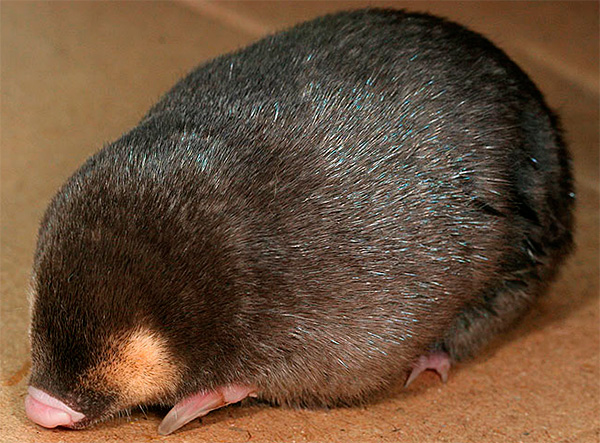
It is interesting
In the order of shrews there are several more species of animals with greatly reduced vision - muskrats. Their eyes are clearly visible, but they do not distinguish the contours of objects, are very shortsighted, and animals rely mainly on touch and smell when hunting. But given the way of life of the desman, they should be considered a parallel branch of development of the ancestors of the present shrews, whose representatives did not switch to the underground (like moles) lifestyle, but to the semi-aquatic.
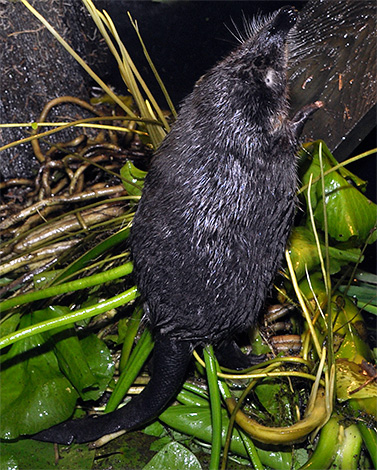
All these conclusions are also confirmed by the fact that representatives of other orders of mammals, passing to the underground lifestyle, also lose their vision, and their eyes are reduced. For example:
- The mole rats are representatives of the rodent detachment. They lead an underground lifestyle, their eyes are completely hidden under the skin;
- The mole rats are also rodents and also prefer to live underground in burrows. Nevertheless, their eyes, although small, are clearly visible and well visible;
- Zocors very close to mole rats. They have faint but visible eyes;
- Goldilocks closer to hedgehogs. Their eyes are at a depth of about 4-5 mm from the surface of the skin and do not see anything at all;
- Marsupial moles in which the eye is not visible at all, but in their place there are pigmented spots. It is noteworthy that these animals lack even the optic nerve.
All of these are examples of convergence of symptoms. Rodents, moles, gold moles and marsupial moles are in no way connected with each other, and none of this group of animals could have descended from another. The general reduction of vision in them developed due to adaptation to a similar lifestyle, which means that it is the loss of eyes (with the simultaneous exacerbation of other senses) that contributes to the survival of these animals.
An interesting video demonstrating how fast the mole is able to bury itself in the ground
Eastern mole devours an earthworm

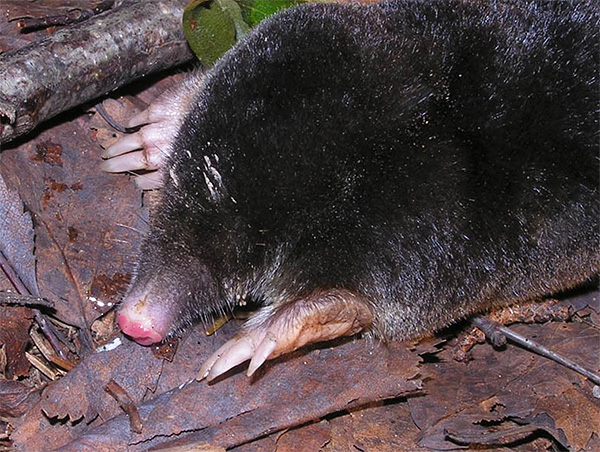
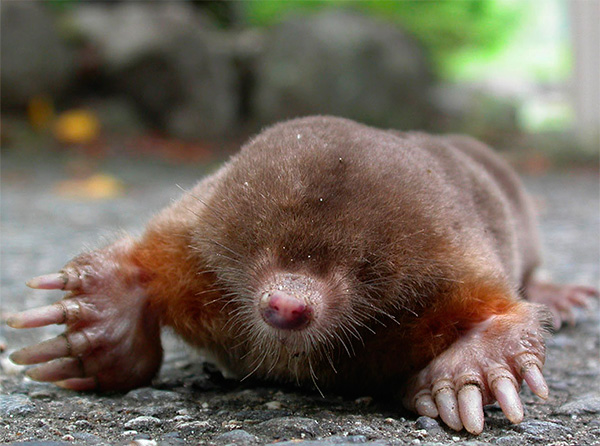
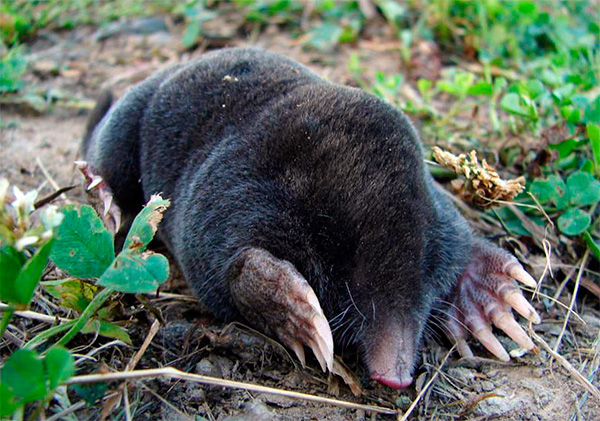
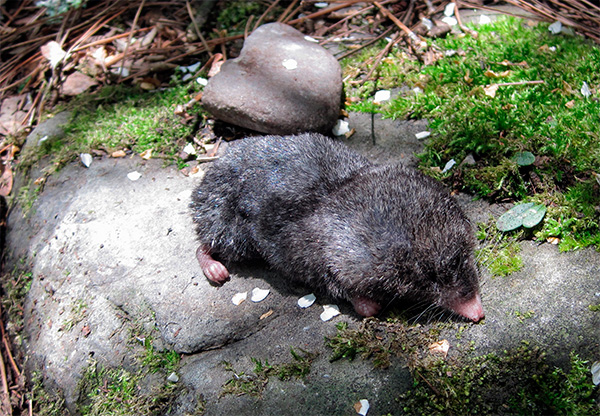
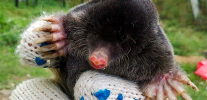
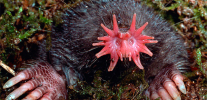

I do not agree. When opening the mole and removing the skin from it (which we did in practice), the skull of the Caucasian mole was without eye sockets!